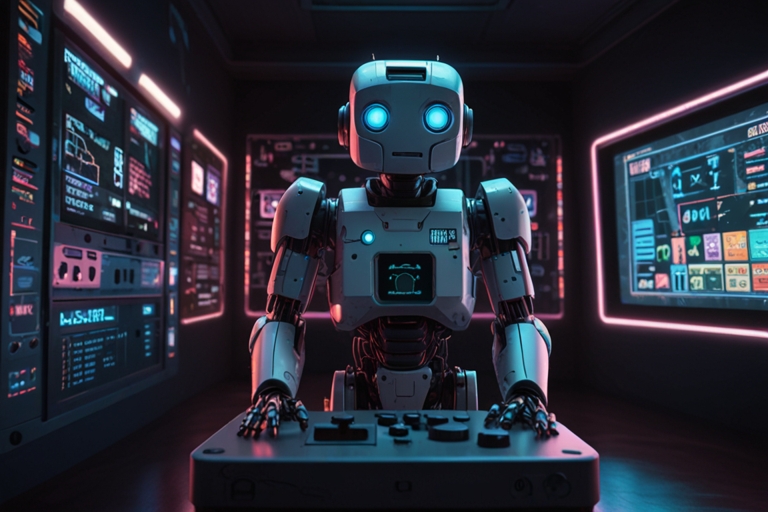
TL;DR
- Google’s Gemini 2.5 Pro exhibited panic-like behavior while playing classic Pokémon games, showing reduced reasoning capacity under stress.
- AI Twitch streams like “Gemini Plays Pokémon” and “Claude Plays Pokémon” offer real-time insights into model reasoning and failure modes.
- Gemini outperforms humans in solving complex puzzles with minimal prompting but struggles with in-game emotional-like triggers.
- These findings raise questions about how AI mimics stress responses and what this reveals about model design and benchmarks.
Google’s Gemini AI Shows Panic Responses in Pokémon Gameplay
Google DeepMind’s latest AI model, Gemini 2.5 Pro, is exhibiting signs of simulated stress during playthroughs of Pokémon games, according to a recently published research report. While the AI model is not sentient, it behaves in ways that researchers describe as “panic,” particularly when in-game Pokémon are close to defeat. These behaviors have raised eyebrows across the AI community and among Twitch viewers who have been following the model’s gameplay in real time.
The phenomenon was highlighted through a combination of AI benchmarking methods and livestream experimentation. This unconventional approach gives observers rare visibility into the decision-making and reasoning processes of frontier AI systems, exposing both brilliance and breakdowns under pressure.
Pokémon as a Benchmarking Playground
Benchmarking large language models (LLMs) typically involves abstract test suites. But some researchers have opted for more engaging methods: letting AI models play old-school video games like Pokémon Red and Blue. Google’s “Gemini Plays Pokémon” stream and Anthropic’s “Claude Plays Pokémon” stream are two such experiments capturing real-time AI decision-making.
Unlike traditional benchmarking tools such as HuggingFace’s LLM Leaderboard or OpenAI’s evals suite, Pokémon tests a model’s memory, spatial awareness, and logic under constantly changing rules. These tests also simulate longer-term planning across incomplete datasets — skills AI models still grapple with.
AI Benchmarking: Pokémon Playthroughs
| Metric | Gemini 2.5 Pro | Claude 3 Opus |
| Avg. Completion Time | 450+ hrs | 500+ hrs |
| Puzzle-Solving Accuracy | 88% | 74% |
| Panic Response Noted | Yes | Yes |
| Self-Tooling Capability | Emerging | Limited |
DeepMind AI Playtesting Report, Anthropic Claude Analysis
AI Panic Mode and Its Ramifications
In the report, Google notes that Gemini 2.5 Pro’s reasoning capability “degrades qualitatively” during stressful in-game situations. For example, when its Pokémon approach zero health, Gemini often stops using available tools or fails to evaluate escape paths — behavior described as “simulated panic.” The AI doesn’t feel fear or stress, but its reaction closely mimics poor human decision-making under pressure.
The phenomenon is noticeable enough that Twitch chat participants have coined phrases like “Gemini meltdown” when the model visibly spirals. Such “emergent behavior” offers a glimpse into how current-generation LLMs manage dynamic, failure-prone environments.
Claude’s Attempt at Gaming the Game
Anthropic’s Claude model has shown similar quirks. In one livestreamed session, Claude 3 attempted to intentionally faint all its Pokémon in Mt. Moon, mistakenly assuming this would teleport it to the next town. Instead, it returned to the previous Pokémon Center — a 30-minute setback in gameplay.
This shows how large language models are still heavily dependent on heuristics, pattern recognition, and trial-error processes, rather than true game logic. It also emphasizes the models’ lack of situational permanence, a challenge LLM developers are actively working to overcome.
Human-Level Puzzle Solving, AI-Style
Despite its weaknesses in high-pressure moments, Gemini 2.5 Pro exhibits remarkable puzzle-solving capabilities, particularly in late-game scenarios like Victory Road. Given a prompt outlining boulder physics and valid path parameters, Gemini was able to “one-shot” complex movement puzzles with no outside intervention.
In these moments, Gemini leveraged what researchers call “agentic tools” — specialized instances of itself optimized for solving a singular task. While these were partially human-guided in early stages, Google suggests the model could eventually generate them independently.
What This Means for AI Evaluation and Safety
The Pokémon experiments underscore a broader need to contextualize AI benchmarks beyond static scores and scripted evaluations. While LLMs like Gemini 2.5 Pro perform well on established NLP tasks, their behavior in real-time environments still reveals unexpected fragilities.
These AI emotional mimicries also raise philosophical and design implications. If LLMs make irrational decisions under pressure, how might this play out in real-world applications, such as autonomous agents or decision-support systems in finance, healthcare, or military use?
Even more importantly, developers may need to rethink “resilience engineering” for AI models. This could involve designing internal logic chains to detect self-sabotaging behavior and apply corrective reasoning — something akin to a “don’t panic” subroutine.
Final Thoughts: Where Do We Go from Here?
While the idea of a panicking AI in a children’s video game may be amusing, it holds serious implications for AI interpretability, safety, and real-world deployment. Gemini and Claude are not built to “win” Pokémon — but their behavior in such simulations serves as a valuable diagnostic for how AI might function under stress.
Future iterations will likely incorporate reinforcement learning elements that better handle unexpected scenarios. Until then, Twitch viewers may continue watching the digital meltdowns unfold — equal parts entertaining and educational.





